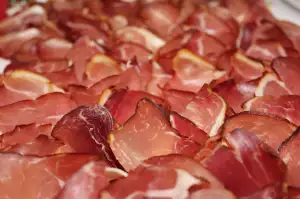Master the Art of Selecting Ripe Watermelons: Essential Tips and Tricks

- **Check the Field Spot**: Look for a creamy yellow spot on the underside of the watermelon, which indicates ripeness.
- **Inspect the Skin**: A dull skin surface rather than a shiny one is a sign of a ripe watermelon.
- **Thump Test**: Tap the watermelon and listen for a deep, hollow sound, suggesting it is ripe.
- **Weight**: Heavier watermelons are typically riper due to their high water content.
- **Shape**: A uniform shape with no irregularities often indicates a ripe watermelon.
- **Tail**: A dried-out stem or tail is a good indicator of ripeness in a watermelon.
**Check the Field Spot**: Look for a creamy yellow spot on the underside of the watermelon, which indicates ripeness.
When selecting a watermelon, one of the key indicators of ripeness is the field spot. This creamy yellow patch can be found on the underside of the watermelon where it sat on the ground ripening in the sun. The deeper and more pronounced the yellow spot, the riper and sweeter the watermelon is likely to be. This is due to the process of sugar accumulation as the fruit matures on the vine, resulting in a deliciously sweet watermelon when properly ripe. So, be sure to check for that creamy yellow field spot to ensure you're picking a perfectly ripe watermelon for your next meal!
**Inspect the Skin**: A dull skin surface rather than a shiny one is a sign of a ripe watermelon.
When selecting a ripe watermelon, it's essential to inspect the skin. A dull skin surface rather than a shiny one is a key indicator of ripeness. The dullness suggests that the fruit has had time to ripen fully on the vine, developing its sweetness and juiciness. Shiny skin may indicate that the watermelon was picked prematurely and lacks optimal flavor. Therefore, opt for watermelons with a matte finish for a deliciously ripe fruit experience.
**Thump Test**: Tap the watermelon and listen for a deep, hollow sound, suggesting it is ripe.
When performing the thump test on a watermelon, you are listening for a deep, hollow sound. This sound indicates that the fruit is ripe and ready to be enjoyed. A dull thud suggests that the watermelon is likely overripe, while a high-pitched or metallic sound may indicate that it is underripe. By mastering the thump test, you can ensure that you select a perfectly ripe watermelon for your next culinary creation.
**Weight**: Heavier watermelons are typically riper due to their high water content.
When selecting a watermelon, consider its weight as an important factor in determining ripeness. Heavier watermelons are usually riper due to their high water content. This is because as watermelons ripen, they accumulate more moisture, making them heavier. So, opt for a heavier watermelon when making your selection to ensure you enjoy the juiciest and sweetest fruit possible.
**Shape**: A uniform shape with no irregularities often indicates a ripe watermelon.
When selecting a watermelon, pay attention to its shape. A ripe watermelon typically has a uniform shape with no irregularities. Avoid fruits that are misshapen or have bumps and dents, as these can indicate an uneven ripening process. A symmetrical watermelon is more likely to have ripened evenly throughout, ensuring a sweet and juicy taste when you cut into it. So, remember, the shape of the watermelon can give you valuable clues about its ripeness and quality.
**Tail**: A dried-out stem or tail is a good indicator of ripeness in a watermelon.
When selecting a watermelon, pay attention to the tail. A dried-out stem or tail is a good indicator of ripeness. This indicates that the watermelon was allowed to fully ripen on the vine before being harvested. A green tail suggests that the fruit was picked prematurely and may not be as sweet or juicy. So, opt for watermelons with a dry, brown tail for the best flavor and texture.
Published: 05. 04. 2024
Category: Food



